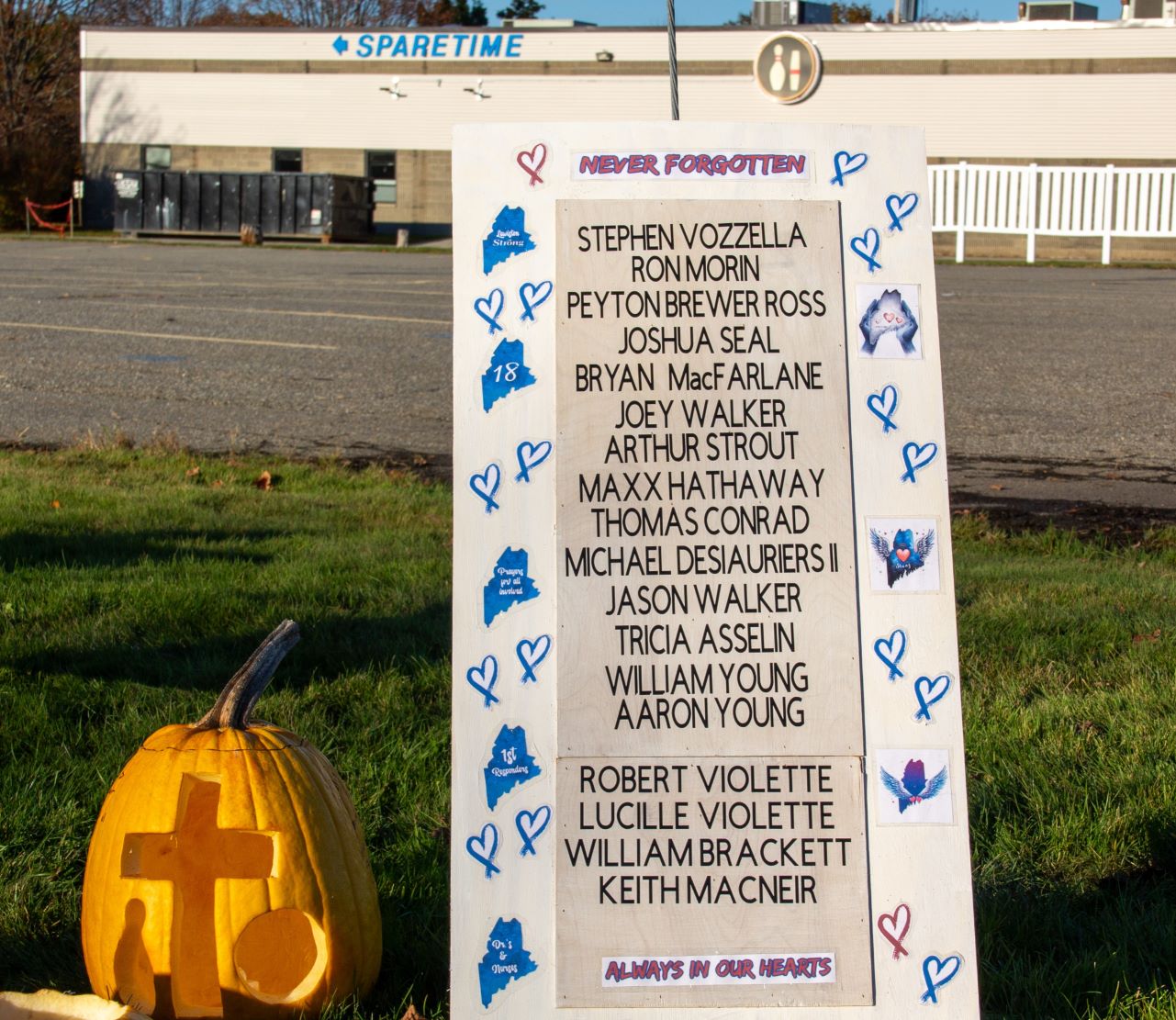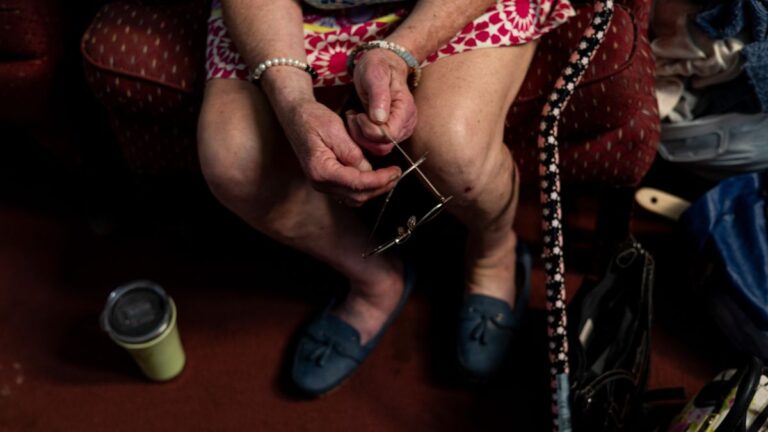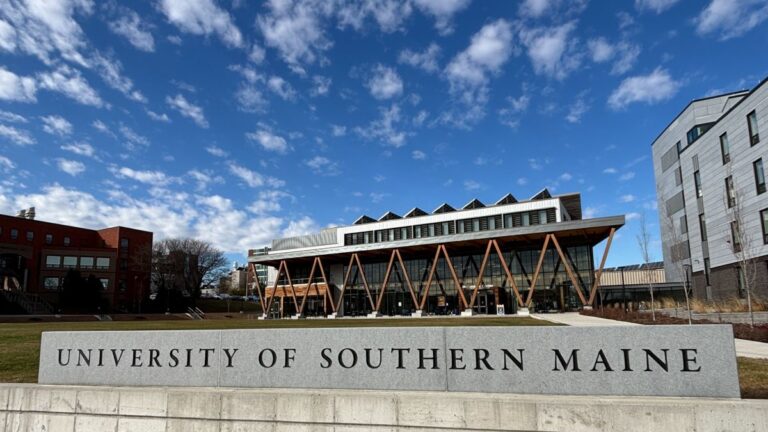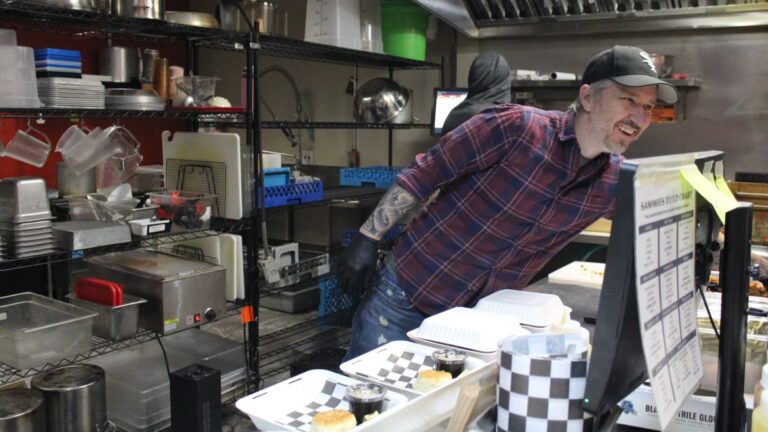Maine suffered from a shortage of mental health providers well before a gunman killed 18 people and injured 13 more at a bowling alley and bar in Lewiston last week.
Now the state faces an even bigger challenge as individuals and communities are left to grapple with the fallout of the mass shooting in the weeks and years to come.
“It challenges our core notion of safety, the sort of, ‘It can’t happen here,’ and then it does,” said Dr. Jeff Barkin, a psychiatrist and immediate past president of Lewiston-based Tri-County Mental Health Services.
The immediate neighborly response in Lewiston is great, but “it really takes a lot more time to heal,” he said. Not only are there people directly affected by the shooting who now need mental care, but individuals for whom the event rekindled past trauma.
Additionally, there are hospital workers, first responders and mental health providers who are experiencing the shooting as both a community member and as a provider, who are at “real risk of developing post-traumatic stress disorder,” Barkin said.
Within days of the Oct. 25 shootings, resources to care for survivors, families of the victims and community members flooded into Lewiston. The Maine Department of Public Safety and the Office of the Attorney General, in coordination with the FBI and Red Cross, opened a Family Assistance Center on Oct. 28 at the Lewiston Armory for victims, witnesses and their loved ones.
The same day, a Community Mental Health Assistance Center providing immediate access to mental health services for the broader community opened at the Ramada Inn in Lewiston. The center is staffed daily by six clinicians and counselors from Tri-County Mental Health Services and two to three clinicians from Sweetser, DHHS spokesperson Jackie Farwell said in an email Wednesday night.
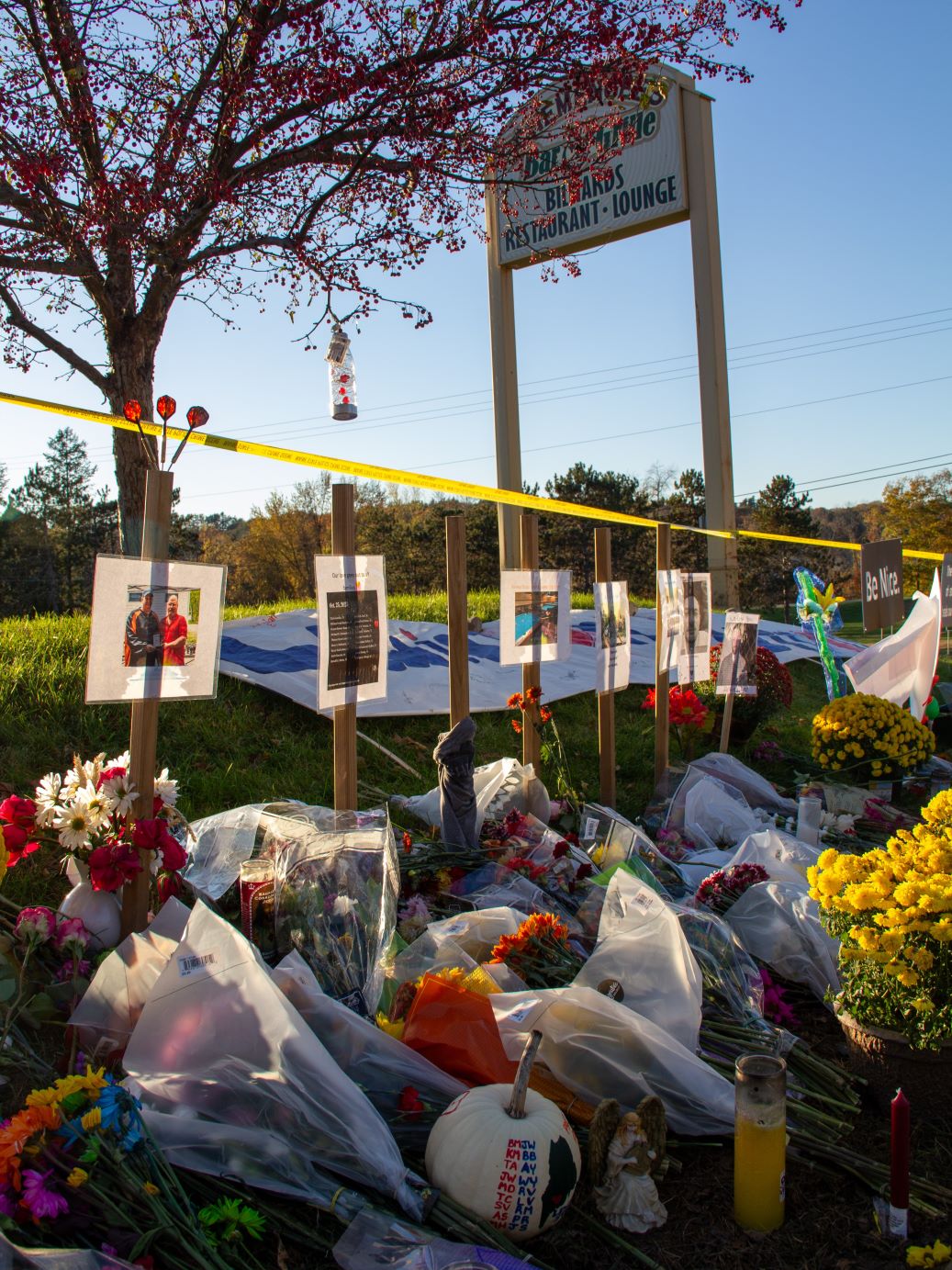
DHHS is working with Maine Association of the Deaf and the Department of Labor’s Division for the Deaf, Hard of Hearing & Late Deafened to ensure communications about resources are accessible, and working with the Deaf and Hard of Hearing community to provide support.
Four members of Maine’s Deaf community were killed in the shooting.
Roxanne Baker, an activist in the Deaf community and part-time American Sign Language instructor at the University of Southern Maine, said providers and counselors for Deaf people from around the country have reached out.
“We do have a good number of therapists and sign language interpreters offering services for support,” she said in an interview through an ASL interpreter and in emails.
DHHS has also stepped up staffing of its Maine Crisis Line, which operates 988, through its contract with The Opportunity Alliance. The deputy director of the White House Office of Gun Violence Prevention, Greg Jackson, arrived in Maine over the weekend at the request of Gov. Janet Mills, and Mills’ office launched a website with additional resources, including an online form where organizations can request behavioral health support from DHHS.
Nearly 60 volunteers, “many with vetted professional licensure and all with DHHS training in (disaster behavioral response)” with the Maine Center for Disease Control and Prevention’s Maine Responds network stand “ready for deployment to those organizations seeking physiological first aid and critical response training,” Farwell said.
President Joe Biden and First Lady Jill Biden will visit Lewiston on Friday, the White House confirmed Wednesday.
“That’s usually what you see in a disaster, and mass shootings included. In the beginning (the response) is heavy-loaded with everyone coming in nationally and whatever it is, to support, you know, the communities,” said Dr. Tony Ng, a psychiatrist and medical director of Community Services for Northern Light Acadia Hospital in Bangor.
Ng, who has practiced for more than 20 years, has a background in emergency and disaster psychiatry, including on-the-ground psychological response following the 9/11 terrorist attacks, Hurricane Katrina and most recently, the Sandy Hook school shooting in Connecticut in 2012. This is the fourth or fifth mass shooting he’s been involved with, he said.
The immediate response is “appreciated,” Ng said, but this situation was “a little weird” initially because “we lost three days because people didn’t know what to do, where (the shooter) was. So it’s not like the shooting happened and we could start processing stuff the next day,” he said.
“We had to have three days where the whole state was in jitters because we didn’t know what happened to the guy.”
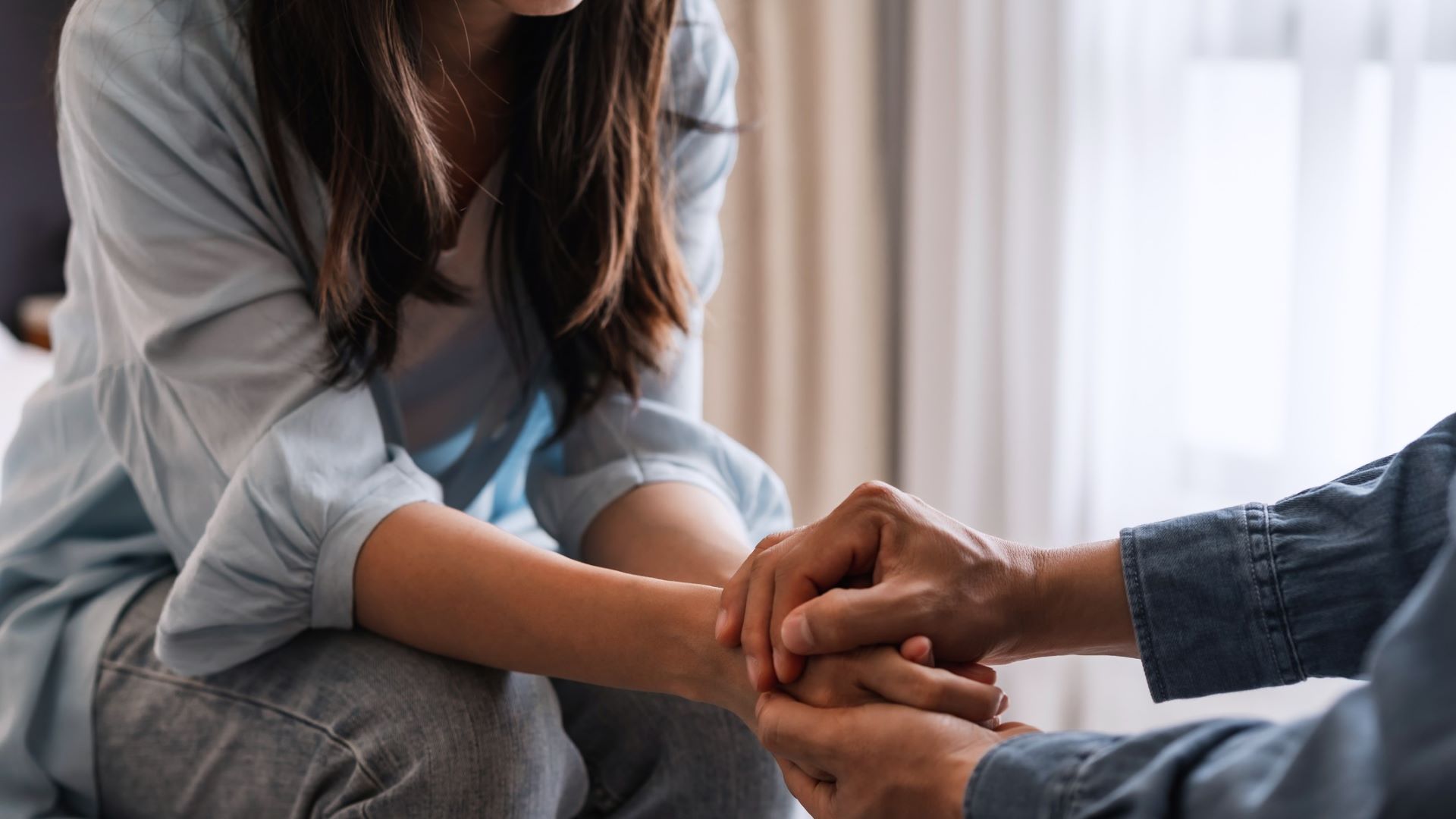
Many of these resources will soon wind down as state and federal disaster response workers return to their own communities or are called to the next crisis. Already, the family and community assistance centers in Lewiston are preparing to transition to a central Community Resilience Center that will open Nov. 13 at the Peck building at 184 Main St. in Lewiston. The family assistance center will close at 5 p.m., Nov. 2, the City of Lewiston announced Thursday morning.
The Lewiston City Council voted unanimously Wednesday morning to apply for grants and funding to cover the costs of therapy dogs, overtime and services provided by non-profit organizations, including a contract with Community Concepts to run the resilience center. City administrator Heather Hunter said funding would cover services there for up to 27 months.
“Long term, the impacts of the tragedy are just beginning to emerge, and will require expanded and sustained behavioral health services and supports. DHHS is working with federal and community partners to develop a plan to address ongoing needs to support healing and recovery for Lewiston and all Maine people,” Farwell said.
Victims’ families and survivors have all been connected to a victim advocate, Lewiston’s communications director, Angelynne Amores, said in a press release Thursday. In addition, Gov. Janet Mills and the local chamber of commerce have launched OneLewiston.org to find services and to tell donors how they can help.
It is not yet clear how staffing for these supports, or any other, can be sustained given Maine’s dramatic shortage of mental and behavioral healthcare workers.
There are 316 active psychiatrists with Maine addresses, according to the Maine Association of Psychiatric Physicians.
Barkin said Maine has lost about 55% of its practicing psychiatrists over the past three years.
“I think when these things happen the immediate flood is almost overwhelming,” said Rebecca Hoffmann, director of MaineHealth’s Center for Trauma, Resilience, and Innovation in Portland.
“The other thing is, there’s always a real desire to help those directly impacted. But then you have all these secondary victims, like those that were in those locations, let’s say, or worked in the hospital, or they were a family member, but maybe not a, you know, a brother, sister, but like a cousin,” she said. “There’s not as much of a focus on them but they are equally suffering potentially.”
Catherine Ryder, who has worked at Tri-County Mental Health Services for nearly 30 years and serves as its CEO, said friends and colleagues immediately started calling her and asking how they could help.
“So in spite of a global workforce shortage, we are not without resources that we need here in the community,” she said.
In a “big small town” like Maine, the ripple effects were and will continue to be felt well beyond Lewiston, Ng said.
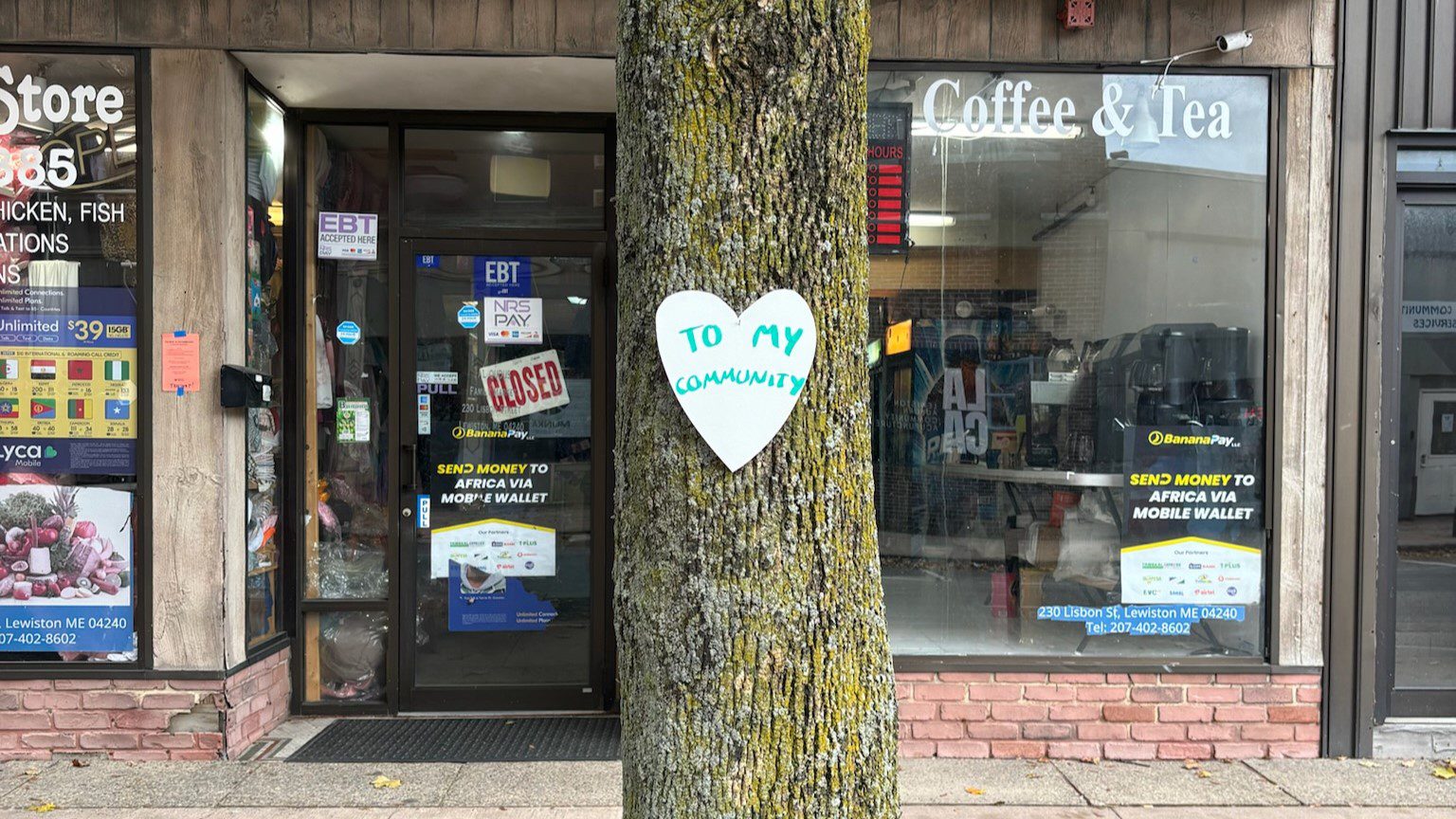
It can be “hard to tell” what that need will be going forward and how to ensure those services are available, Hoffmann said.
“We were struggling with lack of resources from an outpatient perspective in many ways before this incident happened,” Ng said. “I think what it just did was galvanize people to step up a little bit to do stuff. But how long can it be sustained? Because we’re still dealing with not enough providers. We still deal with long wait lists. At some point (the additional resources) fizzles off.”
Even with the partnerships between federal and state officials, “it’s still going to be a challenge,” Ng said.
The support needed extends beyond access to therapy or crisis intervention, Hoffmann and Ng said.
“We need to work better with educating schools. We need to be working better educating faith-based organizations and primary care officers because the reality is we don’t have enough people to start seeing everybody,” Ng said.
Education will be a big piece of the future response. For example, birthdays without loved ones will come and go, the first anniversary of the shooting will approach, and individuals will experience unexpected and indirectly related effects.
“We can educate them to be more vigilant,” and recognize when an individual’s reaction or feelings are within the normal course of processing, and when an individual needs a higher level of psychiatric care so as to not “flood the system,” Ng said.
Resources for people affected by the Lewiston shootings:
Anyone experiencing a medical emergency should call 911.
Free and confidential warm/hotlines:
National Suicide Prevention and Crisis Lifeline: Call or text 988. Trained crisis specialists can also chat online at 988lifeline.org or by texting 988. Individuals who are Deaf or Hard of Hearing can call 988 Videophone for ASL, or use their preferred relay service or dial 711 then 988 for TTY. Veterans can call 988 then press 1. Available 24/7.
National Alliance on Mental Illness Maine’s Teen Text Support Line: Text (207) 515-8398. Teens and young adults ages 12 to 23 can connect with trained support specialists who are 18 to 24 years old. Available daily from noon to 10 p.m. This is not a crisis line.
Veterans Crisis Line: Call 988, then press 1 or text 838255. Veterans and their loved ones do not have to be enrolled in VA benefits to connect with trained crisis specialists. Specialists can also chat online at veteranscrisisline.net. Available 24/7.
Maine’s Statewide Crisis Line: Call 1 (888) 568-1112. Trained crisis clinicians are available to speak 24/7. The Mobile Crisis Team operates 24/7 and can respond to individuals or families wherever they are located.
Sweetser Intentional Warm Line: 1 (866) 771-9276. Adults 18 and older can speak with a trained peer specialist with life experience in mental health recovery. Available 24/7.
Frontline WarmLine: Call 1 (800) 769-9819. Clinicians, educators and first responders can call the FrontLine WarmLine for support managing the stress of responding to disasters. Available daily 8 a.m. to 8 p.m.
If you’re unsure, call 211 or visit 211maine.org.
211 provides general information, including how to access behavioral health and social services. Available 24/7.
In-person support:
Community Resiliency Center at 184 Main St., Lewiston: The City of Lewiston, State of Maine and community partners will open the Community Resiliency Center (CRC) on Nov. 13. More information on hours will be released in the coming days. For more information, visit the City of Lewiston’s website or Facebook page.
Sweetser will have walk-in services available at 217 Main St. in Lewiston, weekdays from 8 a.m. to 5 p.m.
Additional resources:
Office of the Governor: Healing Together: Supporting Victims and Families of the Tragedy in Lewiston
Maine Department of Health and Human Resources: Behavioral Health Resources for Those Affected by the Violence in Lewiston


